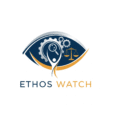EthosWatch Transparency Rating: Methodological Framework for NGOs
1. Introduction
Transparency and accountability are foundational principles for organizations working in the field of human rights. Despite their critical role, many Non-Governmental Organizations (NGOs) face challenges in demonstrating the extent to which they adhere to transparency and governance standards. The EthosWatch Transparency Rating introduces a structured methodology to assess, compare, and monitor NGOs claiming to protect and promote human rights. The aim is to provide a reliable benchmark for donors, policy makers, and communities.
2. Literature Support
The methodology is informed by two key scientific contributions:
• Ortega‑Rodríguez (2020): Identifies transparency as a fundamental component of accountability in NGOs, outlining its purpose, dimensions, and implications for organizational legitimacy. (DOI: 10.3390/su12145834).
• Bekkers et al. (2025): Emphasizes the importance of transparent data and methodological practices in nonprofit research, providing a framework for reproducibility and trust. (DOI: 10.1007/s11266-025-00736-0).
3. Methodology
The EthosWatch Transparency Rating is based on five main pillars:
1. Governance
-
Board structure and responsibilities
-
Decision-making procedures
-
External oversight and audit mechanisms
2. Financial Disclosure
-
Annual financial statements
-
Revenue and expenditure breakdown
-
Independent financial review or audit reports
3. Operational Transparency
-
Clarity of mission and objectives
-
Disclosure of programs and activities
-
Public access to results and impact assessments
4. Stakeholder Engagement
-
Inclusion of beneficiaries and stakeholders in decision-making
-
Feedback mechanisms and grievance procedures
-
Partnerships and collaborative practices
5. Ethical & Integrity Standards
-
Code of ethics and conflict-of-interest policies
-
Anti-corruption and whistleblowing mechanisms
-
Diversity, equity, and inclusion practices
(0 = No evidence, 1 = Minimal, 2 = Partial, 3 = Substantial, 4 = Full compliance).
The overall Transparency Score is the weighted average of all indicators, expressed as a percentage and mapped onto a rating scale (A to E).
4. Expected Impact
The Transparency Rating is expected to generate multiple benefits:
– For NGOs: Strengthened credibility and improved governance practices.
– For Donors: Reliable benchmarking tool for funding decisions.
– For Communities: Greater confidence in organizations that represent their interests.
– For Policy Makers: Evidence-based insights for regulatory reforms and monitoring.
References
Ortega‑Rodríguez, C. (2020). Transparency as a Key Element in Accountability in Non‑profits. Sustainability, 12(14), 5834. https://doi.org/10.3390/su12145834
Bekkers, R., Chapman, C. M., Prosser, A. M. B., Wiepking, P. et al. (2025). Let us be Clear: Why and how to Demonstrate data and Methods Transparency in Nonprofit Research. Voluntas. https://doi.org/10.1007/s11266-025-00736-0
